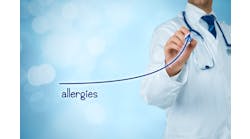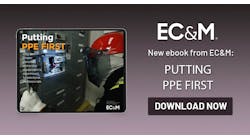Last year, respiratory protection garnered third place on OSHA’s violation citations list. That is up from fifth place in 2019. It’s as if there is a widespread question as to whether lungs are actually needed. Just in case that question arises at some point during your workday, here’s how to get an accurate answer. Sit down in a safe place, then expel all the air from your lungs. Breathe out forcefully, and when there’s no air left stop. See how long you can maintain this state of (practically) empty lungs. You’ll have your answer.
Unfortunately, many people get this answer the hard way. They spend their last few years wheezing and gasping, always short of breath. They are unable to enjoy most of life’s simple pleasures.
Job-related lung injury
Remember, OSHA citations are against the employer. So they don’t reflect the true overall picture. That picture can be much worse than the citation statistics indicate.
OSHA has a respiratory protection standard. All supervisors should take the time to understand it, to help protect their employees from physical harm and their company from financial harm. All employees should take the time to understand it, to protect their own health now and in the future. Your future self is you, not some stranger you shouldn’t care about.
Air contaminants are not always evident. For example, a carcinogen may ride along in a spray you use (read the label and/or the MDS for any solvent or cleaner you use).
Or when they are evident, their harm might not be. For example, you breathe in some silica dust. Maybe you hack up a little phlegm later on, and that appears to be the end of it. But it’s not the end. That dust lodges in your lungs, sharp edges ensuring you won’t cough it back out. Each time you repeat the process, you end up with fewer air exchange sacs (called alveoli) that are viable.
But simply reducing lung capacity isn’t the only consequence. The sharp edges of silica particles also cause mechanical damage, and that means scar tissue. Scar tissue impedes the expansion and contraction of the lungs, and you get a condition called pulmonary fibrosis.
OSHA requires two things to protect employee's lungs:
- Ventilation. This is the primary defense against fogs, vapors, fumes, dust, and many other kinds of contaminants. The goal is to reduce the concentration.
- PPE. This is the secondary defense against lung-hostile junk getting into your lungs.
The most typically used PPE is vastly over-rated for its protection capacity (by users, that is). Consider:
- If it’s a filter-type item (e.g., a dust mask), its material must have gaps smaller than the particle size you wish to filter out. For gases, the filtering agent used must be capable of removing and storing enough of the toxin to get the concentration below acceptable limits.
- It must fit such that no air enters or leaves around the mask/face interface. Achieving this is impossible if you have a beard.
A dust mask won’t totally protect you from dust. But if you bring the concentration down with proper dust collection (such as that attachment for your saw or corer) and adequate ventilation, the dust mask reduces the amount of inhaled dust to a level that is generally considered safe. Your wet air passageways act like flypaper and should be able to handle this amount of dust for X exposure time. If you start coughing, you have exceeded X (you may have exceeded it without coughing).
So, focus on dust reduction and remediation, using the dust mask as just another added layer of protection. This same logic goes for other kinds of masks.
With a positive pressure self-contained breathing apparatus, you can use the PPE as your only line of defense. In some situations, there is no other defense and thus you use this kind of PPE.
COVID-19 consequences
Two negative effects have developed from widespread compliance with the COVID-19 mask mandates:
- Mouth breathing. Mouth breathing bypasses most of the area of those wet air passageways we mentioned earlier. You’re taking air almost directly into the lungs. There’s no mucus to trap particles (including viruses) because all that “flypaper” is in your nasal system. In the winter, mouth breathing can cause severe lung damage because you’ve bypassed the nasal system’s preheating chambers.
- Rapid, shallow breathing. This has several negative effects, upon which entire books have been written. Slow, deep breaths mean better oxygen utilization, but they also help purge the lungs of toxins that would otherwise build up over time and increase the risk of lung disease.
If you’re wearing a mask, you might automatically breathe through your mouth as a way to compensate for restricted air intake. To counter mouth-breathing, you need to be aware of how you are breathing. Make sure it is through your nose. If you can’t get enough air that way, you need to change your mask, reduce the concentration of airborne contaminants, reduce your level of physical exertion, or some combination thereof.
Taking the mask off so you can gulp air is not the solution because if the contaminants are present, you will breathe them in. And in a decade or two, you may be gasping for air even though you’re not wearing a mask.




